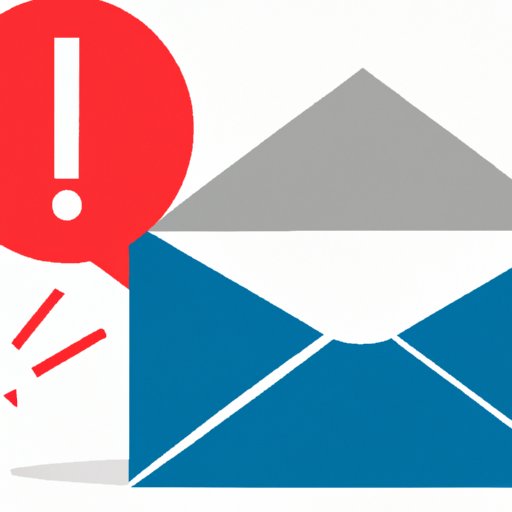Introduction
Emails have become an integral part of our lives. They allow us to communicate quickly and efficiently. However, when our emails are not working, it can cause issues that range from minor inconveniences to major setbacks. In this article, we will explore some of the reasons why your email might not be working and what you can do to fix it.
Troubleshooting Tips: How to Fix Your Email When It’s Not Working
Identifying the cause of the problem is the first step to fixing any email issue. Start by checking your internet connectivity, make sure you can access other websites or online services. Also, be sure to double-check your email settings for any mistakes and confirm that your username and password are accurate. If these steps do not fix the problem, try the following:
- Restart your computer or device: Often, a simple restart can solve many email issues.
- Delete and then re-add the email account: Clear all the previous data and start again from scratch.
- Update the email client: Make sure that you have the latest version of your email client, especially if you are using a desktop client.
- Check your email client configuration: Check your incoming and outgoing server configuration settings. Contact your email provider to verify the settings.
- Run an antivirus scan: Sometimes, email connectivity issues may occur due to a virus or malware infection on your device.
Top Reasons Why Your Email Might Not Be Working
There may be several reasons why your email is not working. Here are some common issues and their solutions:
Email Password is Incorrect
Check to see if you have typed the correct password for your email account. If you have forgotten your password, you can reset it through your account recovery options or contact your email provider for help.
Email Server is Down
Email server maintenance, updates, or downtime can cause email connectivity issues. If this is the case, your email service provider will inform you of any planned maintenance or updates.
Exceeded Storage Limit
If you have exceeded your email storage limit, you may not receive any incoming email. Delete unwanted emails and free up storage space.
Wrong Email Address
Ensure that the email address you are trying to send an email to is correct. Incorrect email addresses will result in non-delivery of your emails.
Blocked Email Address
If you have been blocked by the recipient’s email service provider, your emails will not be delivered. Ensure that you are not sending spammy emails. If this is not the case, contact the service provider regarding the blocked email address.
The Benefits of Using a Professional Email Service
For many people, free email services may seem like a more attractive option than paid email services. However, many free email services have limited functionality, security vulnerabilities, and inadequate storage capacity. Free email services are less reliable compared to professional email services. Professional email services come with numerous benefits such as:
- Unlimited email storage capacity
- Advanced email security features
- 24/7 technical support
- Custom domain email addresses
Investing in professional email services is vital for businesses that send and receive significant volumes of email communication.
How to Get Your Email Up and Running Quickly
Many common email issues can be fixed quickly and easily without any technical knowledge. Here are some easy fixes that you can try:
- Check your spam folder and trash folder: Sometimes, genuine emails may be identified as spam or sent to trash by mistake.
- Clear your browser cache: Clearing your browser cache can free up space and help resolve some email issues.
- Disable email filtering rules: If you have enabled email filtering rules, disable them temporarily to check whether they are causing email connectivity issues.
- Try using an alternative email client: If all fails, try using a different email client to send or receive emails.
If none of the suggestions above work, contact your email service provider customer support team for assistance.
Expert Advice: How to Prevent Email Problems Before They Happen
Prevention is better than cure, so if you want to avoid email connectivity issues, follow these best practices:
- Regularly back up important emails and data: Keep a backup copy of your emails or store them in the cloud for anytime access.
- Keep the email client updated: Always update your client software to get the latest security patches and bug fixes.
- Secure your email with antivirus software: Malware, viruses, and phishing attacks pose a massive threat to email security. Ensure that your device is protected by antivirus software.
- Be cautious of suspicious emails: Never open suspicious emails or click on links from an unknown sender. It is better to delete them to avoid future trouble.
Conclusion
In conclusion, email issues can happen due to several reasons, some of which can be resolved quickly and easily. However, if the problem persists, contact your email service provider to seek further assistance. Remember to apply best practices and proactive measures to avoid email connectivity issues in the first place.
